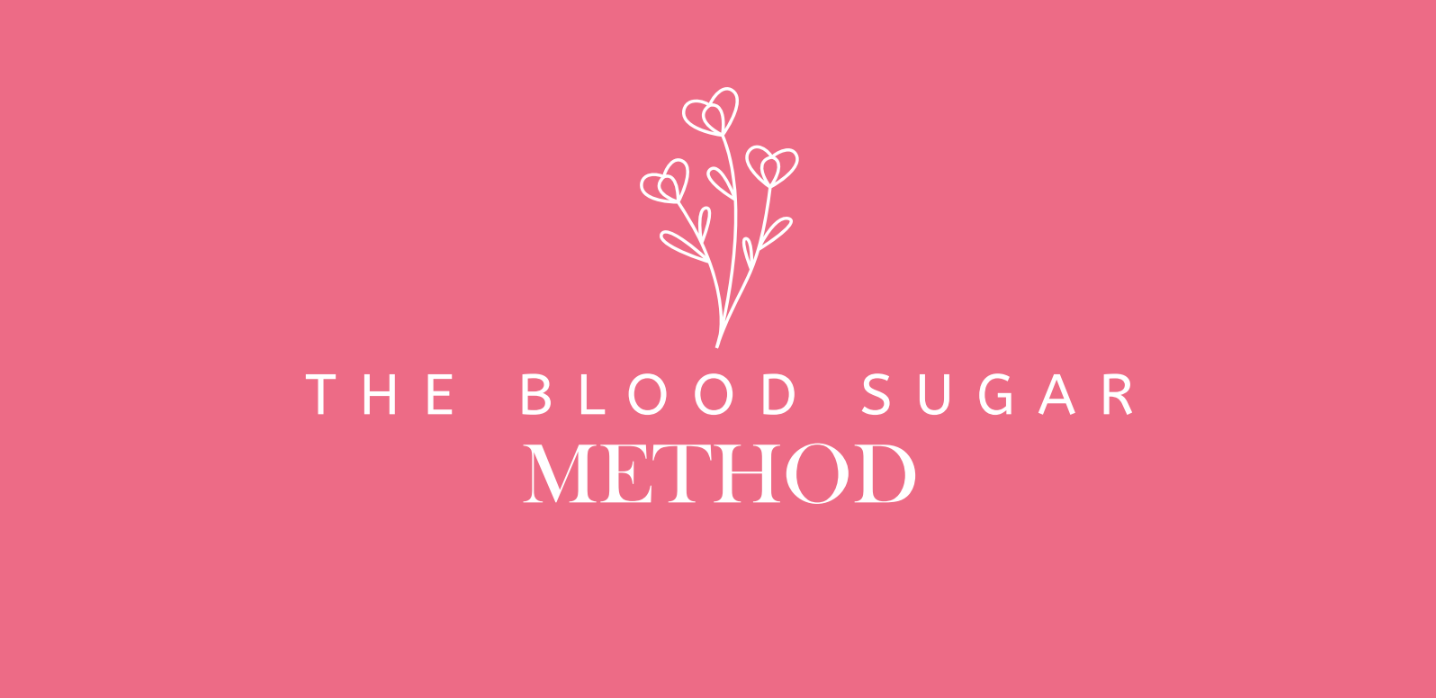What you need to know about Metabolic Health
A conversation with Beth Bollinger of Nest Wellness
Behind so many of our modern struggles with energy, cravings, sleep, hormones, and stubborn weight lies something deeper: the often-overlooked foundation of metabolic health.
It’s a phrase we hear more and more—but what does it actually mean in real life?
This week, I sit down with
, the voice behind the bestselling newsletterNest Wellness by Beth Bollinger , a holistic nutritionist, mother of four, and one of the most thoughtful recipe developers I know working at the intersection of real food and blood sugar balance.Beth comes into this space through lived experience reversing chronic symptoms in her twenties. Her research led her to eliminate refined sugar—and unlock a whole new level of health, vitality, and purpose. Today, she’s helped thousands of people better understand how food, stress, strength, and sleep all work together to shape our metabolic function. Her recipes are CGM-verified (yes, she tests how they impact her actual blood sugar), rich in protein, full of flavor, and a joy to make.
In this interview, we talk about everything from muscle as a metabolic asset, to continuous glucose monitors, and break down what ‘low-glycemic’ actually means on a plate.
Whether you’re new to the metabolic conversation or well on your journey, Beth brings a grounded, refreshingly clear perspective—along with simple tips you can bring to your next meal.
In addition, Beth has graciously offered this community 25% off a subscription to her Substack newsletter, Nest Wellness by Beth Bollinger, where she shares weekly low glycemic recipes, practical wellness tips, and community support for women managing their metabolic health.
Let’s get into it.
The Big Deal
What’s the most surprising thing you’ve learned about metabolic health?
The most surprising thing I’ve learned about metabolic health is that muscle is metabolic currency. Building and maintaining muscle might be the single most important thing you can do for long-term metabolic health—it’s essentially like creating more “storage space” for glucose. When you have more muscle mass, your body has more places to shuttle glucose out of your bloodstream, which helps keep blood sugar stable and improves insulin sensitivity. Here’s what really shocked me: we naturally lose 3-8% of our muscle mass every decade after age 30, and that loss accelerates after 60. This isn’t just about looking fit—it’s about metabolic function and longevity. Less muscle means less capacity to handle glucose, which is one reason insulin resistance becomes more common as we age. And muscle does double duty: it also protects bone health by providing the stress and stimulus bones need to stay strong and dense. That’s why lifting heavy things and eating ample protein aren’t optional—they’re essential. Resistance training and adequate protein intake are two of the most powerful tools we have to fight back against this decline and protect our metabolic health for the long haul. I honestly wish I’d understood this decades ago, because we can’t out-eat or out-cardio poor muscle mass when it comes to blood sugar control.
How does the average person find out that they have poor metabolic health?
Most people discover metabolic dysfunction through symptoms long before abnormal lab results appear. They’re exhausted despite adequate sleep, experience afternoon energy crashes that send them reaching for caffeine or sugar, feel “hangry” when meals are delayed, or struggle with stubborn weight that won’t budge despite diet and exercise efforts. Many describe feeling like they’re on an energy roller coaster throughout the day. These early warning signs often get dismissed as “normal aging” or “busy life stress” when they’re actually red flags that blood sugar regulation is already compromised. By the time labs show pre-diabetes or diabetes, metabolic dysfunction has been quietly developing for years.
Tell us about your journey to become a holistic nutritionist
My journey to becoming a holistic nutritionist was born out of personal necessity and professional frustration. In my twenties, I developed mysterious chronic chest pain that took years to diagnose—eventually identified as mitral valve prolapse syndrome. When I discovered that cutting refined sugar from my diet eliminated my symptoms, I made that commitment at age 35 and have maintained it for 23 years now. For the past 13 years, I’ve also followed a gluten-free, refined grain-free, low glycemic diet.
At the time, I was working as a medical office manager, witnessing daily how poor diet affected patient outcomes. I became increasingly frustrated by the limitations of conventional healthcare and the lack of preventive nutritional guidance patients were receiving. I wanted to be more directly involved in patient care and outcomes, so I decided to study integrative health and holistic nutrition.
Specializing in metabolic health and blood sugar balance has been incredibly gratifying. I feel deeply grateful to be able to help others on their health journeys—while also expressing my creative side through developing low glycemic recipes that actually support metabolic health. My personal experience taught me that real food and blood sugar management can be truly transformative, and that insight became the foundation of everything I do. There’s nothing more fulfilling than showing people that good health can also be absolutely delicious.
What makes a dish low-glycemic?
A truly low-glycemic dish prioritizes three key components: adequate protein (20-30g), healthy fats, and fiber, while keeping refined carbohydrates minimal. It’s not just about avoiding sugar - it’s about creating a combination that slows glucose absorption and keeps blood sugar stable. The protein provides sustained satiety and muscle preservation, fats slow digestion and provide steady energy, and fiber creates a protective barrier that moderates glucose absorption. For example, my raspberry yogurt cake made from almond flour with eggs and yogurt becomes low-glycemic because the protein from the eggs and yogurt, plus the healthy fats from almond flour, buffer any glucose impact from natural sweeteners. These macronutrients work together to prevent the sharp spikes and crashes that leave you reaching for more food an hour later, turning what could be a blood sugar disaster into a satisfying treat that actually supports stable energy.
If someone wanted to try using a CGM, where should they start and how should they be monitoring results?
Start with OTC (over-the-counter) options like Stelo or Lingo, which don’t require a prescription and are designed for metabolically healthy people wanting to optimize their health. Before applying your first sensor, establish a baseline by tracking how you feel after meals - energy levels, mood, cravings, and sleep quality. Then focus on patterns rather than perfect numbers. Look for meals that keep you between 70-120 mg/dL with gentle rises rather than sharp spikes, and notice how you return to baseline within 2-3 hours. The real insight comes from correlating your glucose data with your symptoms - you might discover that the “healthy” smoothie causing your afternoon crash is actually spiking you to 160, or that adding protein to breakfast eliminates your 10 AM energy dip.
How do we navigate blood sugar balance in perimenopause and menopause?
Hormonal changes during perimenopause and menopause make blood sugar management more challenging but also more critical. Declining estrogen reduces insulin sensitivity, meaning foods that never bothered you before might now cause spikes and crashes. This is why women often experience new sugar cravings, weight gain around the midsection, and energy fluctuations during this transition. The key is tightening up blood sugar control through more consistent meal timing, prioritizing protein at every meal (aim for 20-30g), and being extra mindful of refined carbohydrates. Strength training becomes crucial for maintaining muscle mass and insulin sensitivity. Many women find that intermittent fasting becomes more beneficial during this time.
For someone feeling overwhelmed by conflicting dietary advice, what’s your hopeful message?
Your body is your best teacher, and it’s constantly giving you feedback - you just need to learn its language. Instead of chasing the latest dietary trend or expert opinion, start paying attention to how different foods make you feel in the hours after eating them. Do you have sustained energy or do you crash? Are you satisfied or searching for more food? Can you think clearly or do you feel foggy? This bio-individual approach cuts through the noise because what works for someone else’s metabolism might not work for yours. The most sustainable, effective approach is the one that makes you feel energized, satisfied, and in control of your cravings. Trust your body’s wisdom over any external authority - it knows what it needs when you create the space to listen.
What’s your pet peeve in the metabolic health conversation today?
My biggest frustration is the fear-mongering about specific nutrients and foods while ultra-processed “keto” products get a free pass. I see people avoiding an apple because it contains fructose, then eating a protein bar loaded with artificial sweeteners, seed oils, and unpronounceable ingredients. This backwards approach misses the entire point of metabolic health. A piece of fruit paired with nuts or nut butter provides vitamins, minerals, fiber, and antioxidants that support overall health, while that “low-carb” packaged snack can create inflammation and disrupts gut health. The conversation has become so focused on macronutrient ratios that we’ve lost sight of food quality and the profound difference between real, whole foods and manufactured products.
Bite Size Takes
Protein: Protein is your blood sugar’s best friend - it slows glucose absorption, increases satiety hormones, and prevents the energy crashes that drive cravings. Aim for 20-30g at each meal, and don’t be afraid to prioritize it over carbohydrates when building your plate. The thermic effect of protein also means your body burns more calories digesting it compared to fats or carbs.
Fat: Healthy fats are essential for hormone production, nutrient absorption, and creating meals that actually satisfy you for hours. They slow gastric emptying, which means steadier blood sugar and fewer cravings between meals. Focus on extra virgin olive oil, avocados, nuts, seeds, and fatty fish while avoiding highly processed factory made fats that create inflammation.
Intermittent Fasting: Intermittent fasting can be a powerful tool for improving insulin sensitivity, but it’s not magic and it’s not for everyone. If you’re stressed, sleeping poorly, or in perimenopause, forcing a fasting window might backfire by elevating cortisol and disrupting hormones. Start with a gentle 12-hour overnight fast and pay attention to how your body responds - sustainable energy and reduced cravings are good signs.
Exercise: Movement is medicine for blood sugar - it acts like insulin by helping muscles take up glucose from the bloodstream. Both cardio and strength training matter, but resistance training is particularly powerful for building muscle mass, which increases your glucose storage capacity. Even a 10-15 minute walk after meals can significantly blunt blood sugar spikes.
Stress: Chronic stress is a hidden blood sugar disruptor because elevated cortisol triggers glucose release and reduces insulin sensitivity. You can eat perfectly and still struggle with blood sugar control if stress isn’t addressed. Focus on stress management techniques that work for your lifestyle - whether that’s meditation, deep breathing, time in nature, walking with a friend, or saying NO to commitments that drain your energy.
Up, Close & Personal
When I’m not in the kitchen developing recipes or working with clients, you’ll usually find me hiking the beautiful trails of Sonoma County, California, where I live with my husband, Dr. B, and our two youngest children. We also have a house in East Cape, Mexico, where we plan to retire for half the year—trading Sonoma’s vineyards for the Sea of Cortez. I have four children total (two grown and two still at home), and I’m thrilled to share that we have a grandbaby on the way! Our home is wonderfully full: two dogs (Charlie and Luna), four cockatiels, plus a flock of quail and chickens we raise for eggs. Between hiking, skiing, and caring for our menagerie, life is never boring.
My kids and Dr. B have been my most honest recipe critics over the years, and they’ve helped shape so many of the dishes you see on Nest Wellness. If it doesn’t pass their taste test, it doesn’t make it to you! This full, active lifestyle keeps me grounded and reminds me daily why metabolic health matters—I want the energy and vitality to keep up with all of it for decades to come.
Rapid Fire Round
My favorite metabolically healthy
Beverage is.. Matcha or green tea
Breakfast is.. No Oats with full fat yogurt
Purse Snack is.. nuts
Cooking oil is.. Extra virgin olive oil
Dessert is.. Dark chocolate
Airport Snack is.. None- I usually fast when I travel!
Supplement is.. magnesium
Sweetener is..monkfruit allulose blend- reduces blood sugar and supports metabolic health
For those ready to dive deeper, I am offering my signature course, The Blood Sugar Method, for just $199 for a limited time (regularly $297). The course is HSA/FSA eligible, making it even more accessible.
Inside, you’ll find:
Do at your own pace, comprehensive lessons on blood sugar balance and metabolic health
Delicious low glycemic recipes and ready-made meal plans
Cooking classes to build your confidence in the kitchen
Monthly live Q&As with expert guests
Direct access to me daily in our chat for personalized support
A vibrant, supportive community of women on the same journey
This course is specifically designed for women 40+ who are ready to take control of their metabolic health, increase their energy, and feel their best.
Thank you, Beth for your generosity and insight! I’ll see you all next week, xoxo.









Thank you, Vasudha, for the thoughtful questions and the opportunity to share about metabolic health with your wonderful community!🧡
I love this deep dive and peek into Beth’s POV. Both of you are my favorite brain-healthy recipe creators on Substack. Metabolic health is brain health—thanks for all you do!